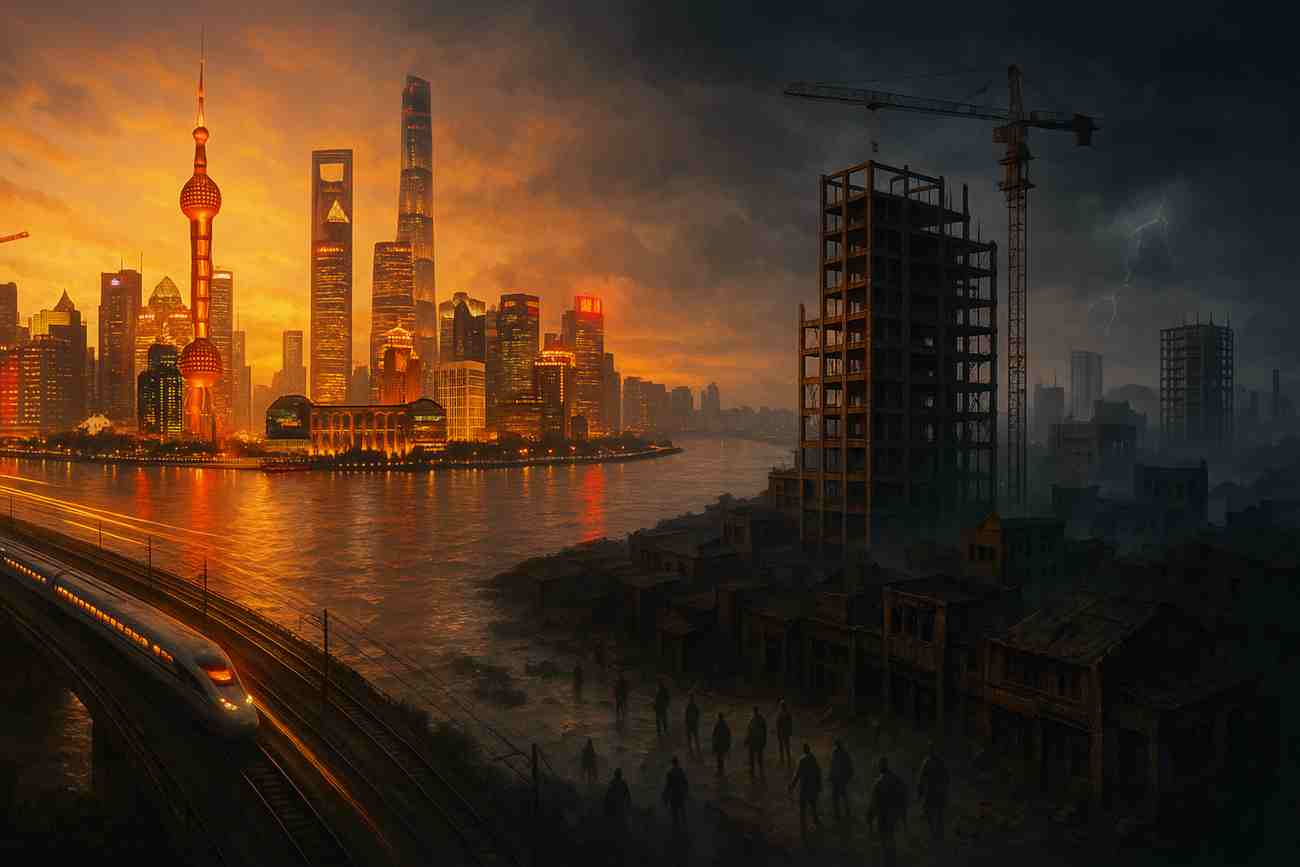
Is China a rising power or a falling star? The answer is both. The most important geopolitical question in the world today is, which one of those trends will dominate? Will China rise to true great power status with a developed economy, high-value added manufacturing and military parity with the U.S.? Or will China collapse into political chaos as it has many times in the long history of its civilization? One or the other outcome is likely, but which outcome is uncertain. The makeup of the world geopolitical order hangs in the balance.
The United States and Russia are established superpowers. That will not change soon. China is properly counted alongside the U.S. and Russia as a great power, but its weaknesses put it in a slightly lower rank. Russia has 5,549 nuclear warheads. The U.S. has 5,277. China has 600 nuclear warheads although that number is growing.
Of course, it would only take perhaps 50 or fewer nuclear detonations to destroy life on earth. The significance of a large nuclear arsenal distributed among ICMBs, IRBMs, bombers, submarines, cruisers and mobile launchers is to withstand a first strike by an opponent and be able to launch a second strike. That’s the essence of deterrence, which has kept the nuclear peace since 1945.
Russia and the U.S. have deterrence capability. China does not. A smaller nuclear arsenal can actually be destabilizing because the temptation for a weaker power to launch a first strike is greater. China is in that position today.
The U.S. has a huge consumer economy, advantages in technology, and a highly developed financial sector to help drive economic growth. Russia does not have nearly as developed a consumer sector, but it has a greater capacity to be self-sufficient (even autarkic) if necessary. Russia’s ability to withstand U.S. sanctions related to the Ukraine war is evidence of this.
China is different.
The country is highly dependent on exports and the manufacturing jobs behind those exports. It is far from self-sufficient. When the U.S. shuts the door on Chinese exports through high tariffs and other sanctions, the negative impact on Chinese output, employment and reserves is real.
An Untested Military
China’s military prowess is impressive to a point. It has three aircraft carrier battlegroups, which include cruisers, destroyers, submarines and amphibious assault vessels. China has developed a hypersonic missile (not as advanced as the Russian version) at a time when the U.S. has no hypersonic capability. China has the largest military in the world with 2.04 million troops compared to 1.1 million troops for Russia and 1.3 million for the U.S.
Its biggest military deficiency is that its troops are not battle-tested. The U.S. has fought major wars in Iraq, Afghanistan and Kuwait since 1991 and has been in combat in Northern Syria for twenty years. Russia has fought major wars in Chechnya, Georgia, Syria and Ukraine since 2000. China has fought no major wars since 1950, only minor skirmishes with Vietnam and India.
Prussian Field Marshal Helmuth von Moltke said, “No plan survives first contact with the enemy.” China has had no contact with any enemy in seventy-five years. There is simply no way to assess how its military would perform in an actual war.
China has acted aggressively in claiming all of the South China Sea as its territorial waters and using bullying tactics against Philippine fishing boats and Coast Guard vessels. China’s claims are rejected by the other nations around the South China Sea and by the United Nations. The U.S. is a treaty ally of the Philippines.
China has turned certain coral reefs into major islands by dredging and building military bases and air strips on those islands. The U.S. insists on freedom of navigation and does not recognize Chinese sovereignty in the South China Sea. So far, both sides have avoided escalation although the Chinese did embarrass themselves recently when a Chinese destroyer sliced off the bow of a Chinese Coast Guard vessel near the Philippines.
Chinese fighter aircraft launched from their aircraft carriers carry reduced fuel and weapons loads because of the ski-jump takeoff method. U.S. aircraft use steam-powered catapult technology that allows full fuel and weapons loads. Taking other technology including anti-missile systems into account, any sea battle between the U.S. and Chinese navies would be heavily one-sided in favor of the U.S.
An Economic State of Near Collapse
The reported 5% annualized GDP growth in China is a mirage. Those figures include investment in fixed assets, including ghost cities and unused prestige projects that would be immediately written down to zero under any standard accounting method.
Your editor addressing the China Chief Economist Forum, CCEF, in Shanghai, China. The CCEF is composed of the chief economists of every major bank in China, including Chinese branches of U.S. and European banks. The audience included CCEF members, institutional investors, government officials, and media.
Bad debts are ignored. Banks are propped up with dollar loans from the central bank, which depletes China’s reserve position. Its debt load is more extreme than U.S. debt and impedes further growth. So-called “stimulus” has failed repeatedly. China’s stock market (especially its tech sector) is in a bubble. China’s currency is supported by dollar interventions to buy yuan and its reported per capita GDP of $13,687 (firmly in the middle-income trap) is distorted by the degree distribution heavily skewed toward a small percentage of super-wealth. This leaves everyday Chinese citizens with a far lower per capita income.
In short, the Chinese economy is probably in a recession. Youth unemployment is approaching 30%. The entire system is in a state of near collapse.
A Xi Coup
Worse yet, the Chinese political system has undergone a military coup d’état. President Xi Jinping has been demoted to a position subordinate to a new committee headed by the top leader of the People’s Liberation Army. Cliques loyal to former presidents Hu Jintao and Jiang Zemin have emerged from hiding and are now becoming politically active again. This is in keeping with a millennial-old pattern of extreme centralization followed by decentralization and warring factions as Chinese dynasties gain power and then fail.
Xi Jinping reached the pinnacle of centralization in 2018 when term limits of two five-year terms for presidents were removed, and he was allowed to remain “president for life.” Xi became the most powerful Chinese leader since Mao Zedong. From there (and with a good understanding of Chinese history going back to the Xia Dynasty of 2070 BC), it was easy to predict the fall of Xi Jinping and the collapse of the Peasant Dynasty represented by the Chinese Communist Party. That collapse is now proceeding in slow motion. Whether it accelerates is one of the pivotal political questions of the day.
An Invasion of Taiwan? No Go
Finally, analysts spend enormous amounts of time on the issue of an invasion of Taiwan by Communist China. That will not happen. With Chinese vessels crashing into each other and the U.S. on the side of Taiwan, the idea of a D-Day type invasion of Taiwan with a million men in an amphibious landing by a force that has never been tested in combat seems absurd. China has massive internal problems. Those problems will not be solved by creating even greater problems with a cross-strait invasion.
The Fall of the CCP
Is China rich and powerful? Yes. Is it stable and growing? No. Is it a credible military threat to Taiwan or the U.S.? Not unless it is prepared to pay an unacceptably high price for its adventurism.
Most of China’s technology is either stolen or second-best compared to U.S. and even European or Russian technology. U.S. investment is in full retreat from China. U.S. markets are quickly closing to Chinese goods.
China has few alternative “buyers of last resort.” Unemployment is skyrocketing and bad debts are rising to the surface. China may yet emerge as a great power. But not before the fall of the Communist Party and a period of grave instability that will have ripple effects around the world.



